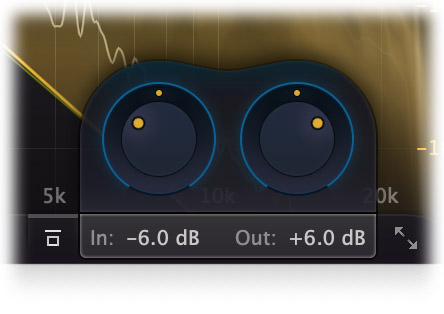FabFilter Pro-R 2 online help
Table of contents
Go to sectionFabFilter Pro-R 2 Help
Introduction
Using FabFilter Pro-R 2
Full Screen mode, resizing and scaling
Presets
Purchasing FabFilter Pro-R 2
Support
Input and output options
At the far right, the bottom bar in the interface contains the following input/output options.
The Global Bypass button lets you bypass the entire plug-in. While most hosts already provide the ability to bypass plug-ins, our internal global bypass applies soft bypassing to avoid clicks. While the plug-in is bypassed, the frequency analyzer and delay display feedback stops and a red line at the top of the bypass button appears.

As soon as you hover the mouse over the output button, right next to the bypass button, a panel with input/output/pan knobs will pop up:
- The Input Level/Pan knob at the left adjusts the level and L/R panning of the input signal before any processing is applied.
- The Output Level/Pan knob at the right adjusts the level and L/R panning of the final output signal.
Next: MIDI Learn
See Also
Using FabFilter Pro-R 2
Knobs
